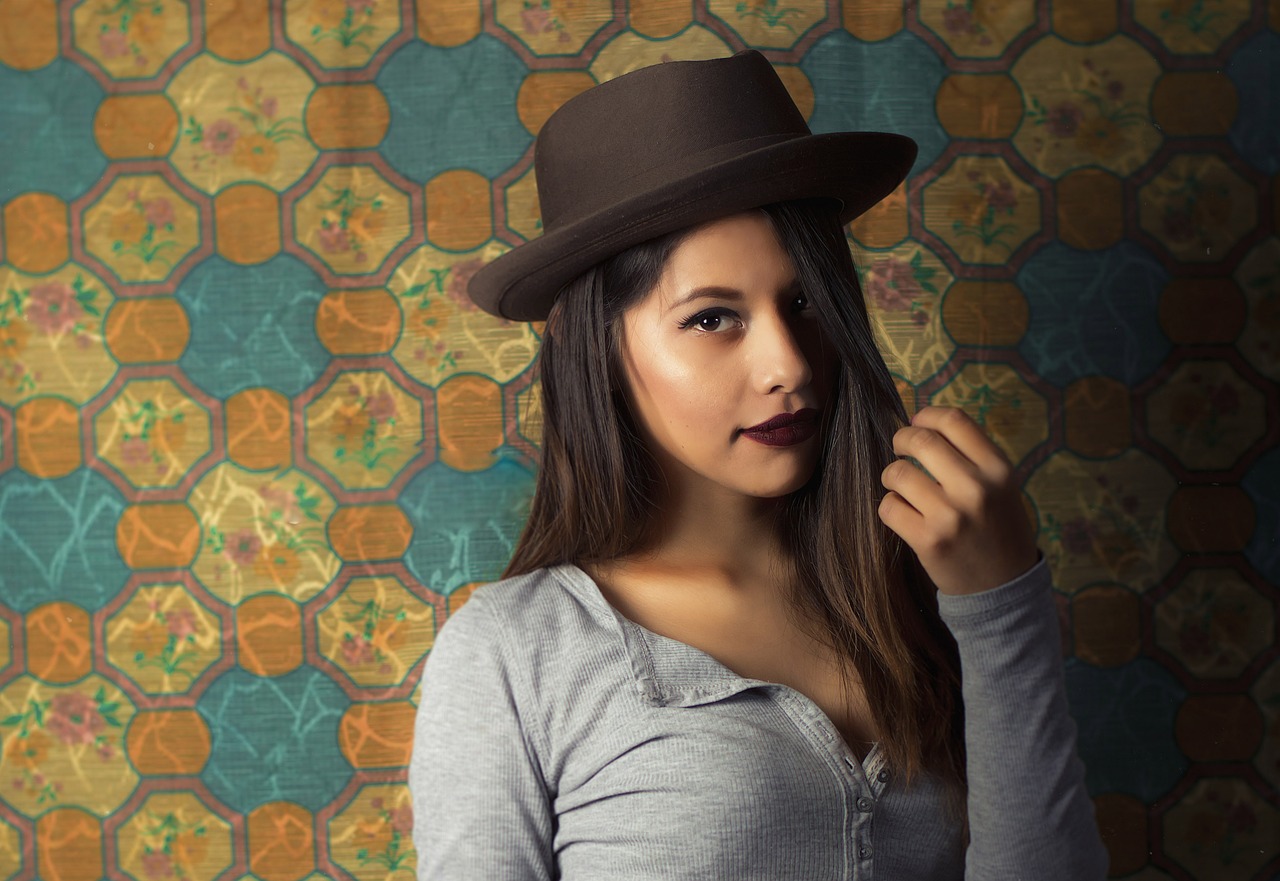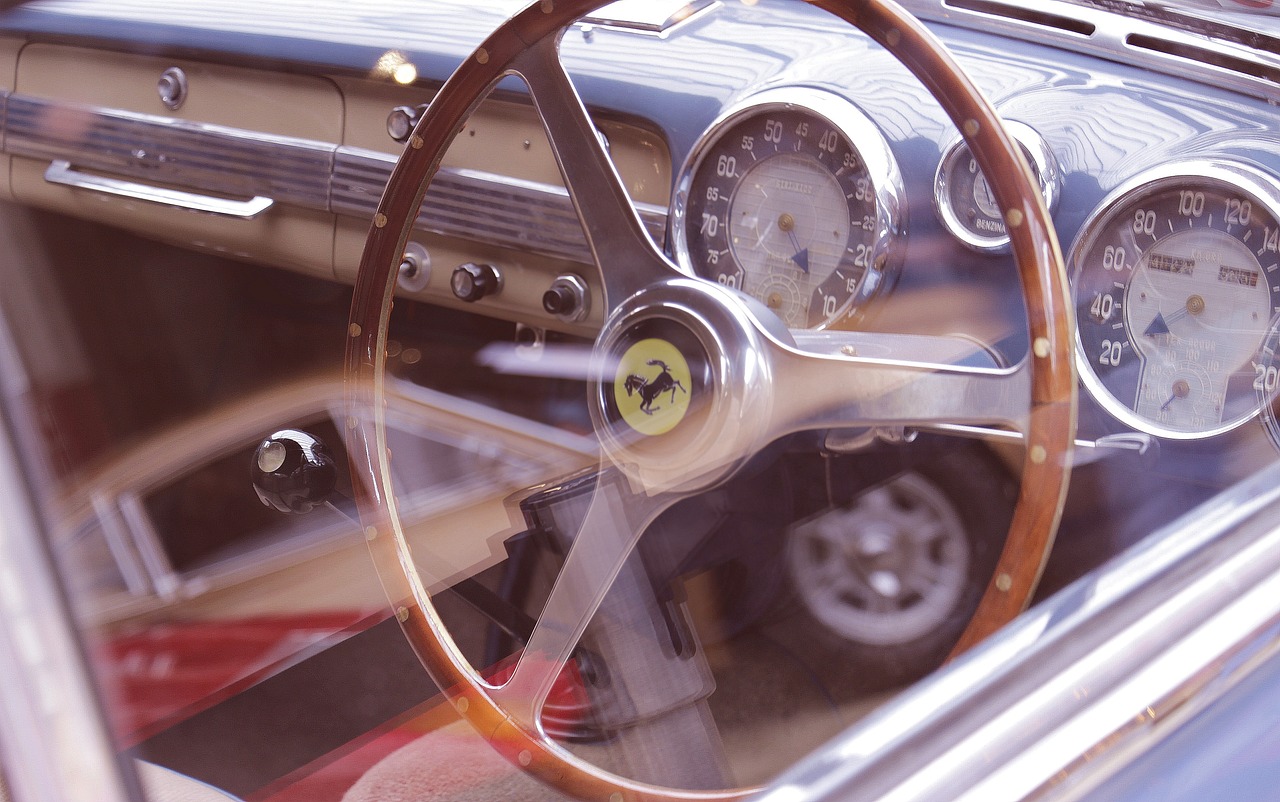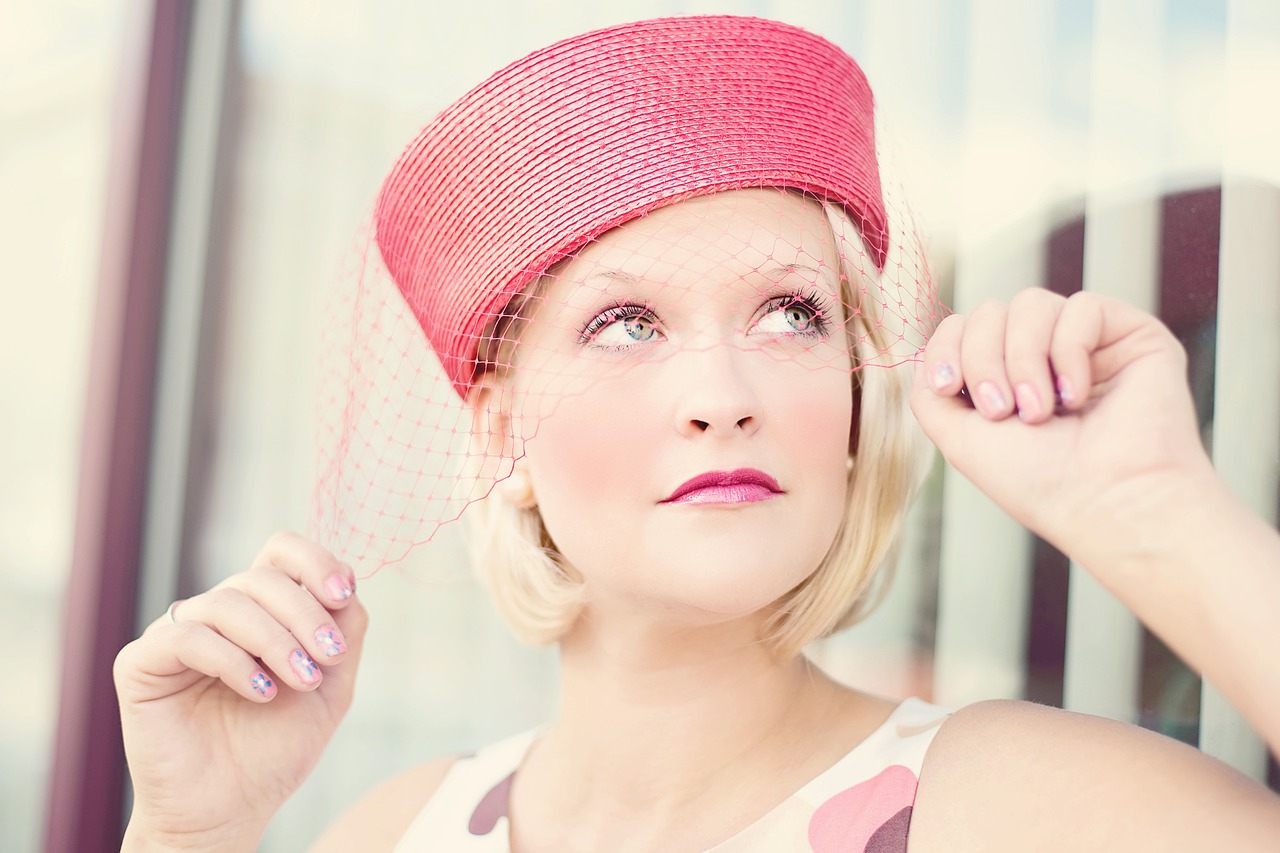Unveiling the Glamour: Iconic Styles That Defined the 1960s

The 1960s was a decade of profound change, not just socially and politically but also in the realm of fashion. This dynamic era witnessed a radical transformation in women’s clothing, reflecting the spirit of liberation and modernity. Let’s embark on a journey to unveil the iconic styles that defined this glamorous decade.
The Shift in Silhouettes
Gone were the days of the constricting hourglass figure. The 1960s embraced more relaxed and youthful silhouettes. Mini skirts, shift dresses, and bell-bottom pants became staples in every fashionable woman’s wardrobe.
- Mini Skirt: Introduced by designer Mary Quant, the mini skirt symbolized freedom and youth. It allowed women to express their individuality and confidence.
- Shift Dress: This simple, straight-cut dress was perfect for the modern woman, providing comfort without sacrificing style.
- Bell-Bottom Pants: Originally worn by sailors, these wide-legged trousers became a fashionable choice for women who sought a chic yet casual look.
Fabrics and Patterns
The fabrics of the 1960s were as bold as the styles. Bright colors, psychedelic patterns, and innovative materials took center stage.
- Bold Prints: From geometric designs to floral motifs, the bold prints of the 60s reflected the era’s vibrant culture.
- Mod Style: This fashion movement embraced synthetic fabrics like nylon and polyester, making outfits more accessible and easier to maintain.
The Rise of Iconic Designers
Several designers emerged as leading figures in 1960s fashion, shaping styles that are still celebrated today.
| Designer | Iconic Contribution |
|---|---|
| Mary Quant | Popularized the mini skirt and the mod look. |
| Yves Saint Laurent | Introduced the tuxedo jacket for women, empowering them to embrace masculine styles. |
| Oleg Cassini | Defined Jacqueline Kennedy’s sophisticated style, blending elegance with modernity. |
Accessories That Made a Statement
No outfit was complete without the right accessories. The 1960s saw the rise of unique and playful additions to women’s wardrobes.
- Go-Go Boots: These knee-high, often white boots became synonymous with the mod culture, adding a fun twist to any outfit.
- Statement Jewelry: Bold earrings, chunky necklaces, and oversized sunglasses were essential for completing the look.
The 1960s was a decade where fashion mirrored the spirit of the times—bold, liberated, and innovative. As we reflect on this era, we appreciate how these iconic styles not only defined a generation but also continue to influence modern fashion today.
The Power of Accessories: Transforming Outfits with Statement Pieces

The Power of Accessories
In the vibrant tapestry of 1960s fashion, accessories played a pivotal role, turning simple outfits into statements of personal style. Let’s explore how these remarkable pieces can enhance your wardrobe.
Why Accessories Matter
Accessories are not just afterthoughts; they are the magic touch that can elevate an ensemble. From hats to handbags, each piece carries its own story and significance.
Iconic Accessories of the 1960s
Imagine yourself in a classic mod dress, perfectly complemented by a bold statement necklace. Let’s delve into some iconic accessories:
Wide-brimmed Hats: A staple for many ladies, these hats added sophistication and flair.
Chunky Jewelry: Think oversized earrings and bold bangles that drew attention to your graceful movements.
Colorful Scarves: Worn around the neck or tied to a handbag, scarves added a splash of color and personality.
Vintage Handbags: Often structured and stylish, they were essential for carrying all your essentials while making a fashion statement.
Transforming Your Outfit
Have you ever wondered how a simple outfit can transform into something extraordinary? Here are a few tips to help you harness the power of accessories:
Mix and Match: Don’t be afraid to combine different styles. A vintage scarf with modern jewelry can create a unique look.
Choose a Focal Point: Select one statement piece, like a bold necklace, and let it shine while keeping other accessories understated.
Layering is Key: Layering bracelets or necklaces can add depth and intrigue to your outfit.
Consider the Occasion: Match your accessories to the event. A formal gathering calls for elegant pieces, while casual outings can embrace more playful options.
Interactive Exploration
Now, imagine your wardrobe. Do you have accessories that can transform your outfits? Look through your collection and consider these questions:
Which pieces make you feel confident?
Are there accessories that you’ve never worn?
How can you incorporate vintage pieces into your current style?
As you ponder these questions, remember that the right accessories can not only enhance your look but also reflect your unique personality.
Embrace the power of accessories and let them tell a story that is uniquely yours. The 1960s remind us that fashion is not just about clothing but about the art of expression. So, go ahead and explore your accessories – you might just rediscover a new favorite!
Fashion Icons of the 60s: Celebrating the Trailblazers of Elegance

Step back in time to the vibrant 1960s, an era where fashion was not just clothing but a statement of individuality and freedom. This decade gave rise to some of the most iconic fashion figures who defined elegance and style. Let’s embark on an interactive journey to celebrate these trailblazers who shaped women’s fashion.
Audrey Hepburn: The Quintessential Elegance
Audrey Hepburn was more than an actress; she was a fashion muse. Known for her classic looks, she often collaborated with designer Givenchy to create timeless outfits. Do you remember her famous little black dress from Breakfast at Tiffany’s? It remains a symbol of sophistication even today.
Jacqueline Kennedy Onassis: The First Lady of Style
The style of Jacqueline Kennedy, the First Lady of the United States, was characterized by her impeccable taste and elegance. Her shifting silhouettes and pillbox hats became iconic. Can you recall the stunning outfits she wore during public appearances? Let’s discuss how her fashion choices influenced women’s attire in the 60s.
Twiggy: The Face of Mod Fashion
Twiggy, with her boyish haircut and striking lashes, became the face of Mod fashion. Her daring and playful style captured the essence of the youth culture of the 60s. What were your favorite trends from the Mod movement? Perhaps the vibrant prints and mini skirts?
Brigitte Bardot: The French Bombshell
Known for her alluring style, Brigitte Bardot epitomized French elegance with a touch of sensuality. Her breton stripes and skirt sets were revolutionary. How did her style influence your own choices in the past? Let’s reminisce about the bold fashion statements she inspired.
As we reflect on these incredible fashion icons of the 1960s, it becomes evident how their unique styles contributed to the evolution of women’s fashion. Which icon do you connect with the most? Share your thoughts and let’s celebrate the elegance that defined a generation!
From Couture to Casual: Exploring the Versatility of 1960s Fashion
Introduction to 1960s Fashion
The 1960s was a decade of transformation, not just in culture but also in fashion. Ladies’ styles evolved remarkably, embodying a spirit of freedom and expression. Let’s embark on an interactive journey through this vibrant era!
Couture: The High Fashion of the 60s
Couture in the 1960s was characterized by bold designs and luxurious materials. Renowned designers like Christian Dior and Yves Saint Laurent brought forward a blend of sophistication and creativity. Can you recall any specific outfits from this time that influenced your wardrobe?
- Classic A-Line Dresses: These dresses flattered all body types and were often paired with stylish accessories.
- Mini Skirts: A revolutionary style that symbolized women’s liberation.
- Colorful Prints: Geometric patterns and vibrant colors dominated the scene.
Casual Wear: The Shift Towards Comfort
As the decade progressed, casual wear became more prevalent. The influence of youth culture and music shaped everyday fashion choices. Think about your favorite casual outfit from the 60s!
- Bell-Bottom Jeans: A staple for many, these jeans were often worn with flowy tops.
- Tunics: Comfortable and stylish, tunics were perfect for both day and night.
- Graphic Tees: A new trend that encouraged self-expression through slogans and art.
The Impact of Pop Culture
Music and cinema played a significant role in shaping fashion. Icons like Audrey Hepburn and Twiggy set trends that many aspired to emulate. What were some of your favorite movies or songs from the 60s that influenced your style?
- Beatlemania: The Beatles not only influenced music but also inspired fashion with their unique styles.
- Hollywood Glamour: Actresses showcased chic outfits that many women wanted to replicate.
Accessories: The Finishing Touches
No outfit was complete without the right accessories. The 1960s embraced a variety of statement pieces. Remember the accessories that you loved back then?
- Oversized Sunglasses: A must-have for any fashionable lady.
- Statement Handbags: Often bold and colorful, they complemented outfits beautifully.
- Chunky Jewelry: Pieces that added flair and personality to every look.
Conclusion: The Legacy of 1960s Fashion
The versatility of 1960s fashion continues to inspire designers and fashion lovers today. Whether you preferred the elegance of couture or the comfort of casual wear, this decade offered something for everyone. What elements of 1960s fashion do you still cherish in your wardrobe today?
Reviving the Classics: How to Incorporate 60s Fashion into Modern Wardrobes
Rediscovering the 60s Aesthetic
The 1960s was a decade of bold choices and vibrant styles. From the mod looks of London to the bohemian vibes of San Francisco, there was a variety of fashion that still resonates today. Are you ready to explore how to bring these classic elements into your modern wardrobe?
Key Elements of 1960s Fashion
Let’s start by identifying some of the key elements that defined 60s fashion:
A-Line Dresses: These dresses, with their fitted bodices and flared skirts, can be both flattering and comfortable.
Bold Patterns: Think geometric shapes and vibrant colors. Patterns can add a lively touch to any outfit.
Accessorizing: From oversized sunglasses to statement jewelry, accessories were essential in the 60s.
Footwear: Consider classic Mary Janes or knee-high boots to elevate your look.
Incorporating 60s Fashion into Your Wardrobe
Now, let’s explore how to seamlessly blend these timeless styles into your everyday outfits:
1. A-Line Dresses
Start with a classic A-line dress. Choose a solid color or a subtle floral pattern. Pair it with a cardigan for a chic look. How does that sound?
2. Layering with Modish Patterns
Next, consider layering. Use bold patterned tops under solid blazers or cardigans. This technique adds interest without overwhelming your look.
3. Accessorizing Like a Star
Don’t forget about accessories. Large, round sunglasses can be a fun addition. Try wearing chunky necklaces or earrings that capture that 60s spirit.
4. Footwear Choices
For footwear, consider classic Mary Janes or ankle boots. They can be paired with almost any outfit and offer a nostalgic touch.
5. Mix and Match
Mix modern pieces with vintage finds. A modern skirt can be paired with a vintage blouse to create a unique look. Have you tried this before?
Interactive Styling Tips
As you explore incorporating 60s fashion, consider these questions:
What colors or patterns do you feel most comfortable wearing?
Do you have any vintage pieces in your wardrobe already?
How can you make these styles your own while adding a modern twist?
Conclusion: Embrace the Elegance
Incorporating 60s fashion into your wardrobe can be a fun and rewarding experience. With a few key pieces and some thoughtful styling, you can embrace the elegance of the past while celebrating your unique style today. Are you excited to give it a try?
Patterns and Prints: The Bold Colors that Made a Statement in the 60s
Introduction to 1960s Patterns and Prints
The 1960s was a decade defined by change, and fashion was no exception. Bold patterns and vibrant prints adorned the garments of ladies, making statements that echoed the revolutionary spirit of the time. From geometric shapes to psychedelic swirls, the patterns of the 60s were not just designs; they were reflections of a culture in flux.
The Influence of Art and Culture
Art movements like Pop Art and Op Art heavily influenced the patterns of the 1960s. Designers drew inspiration from artists such as Andy Warhol and Roy Lichtenstein, incorporating their bold colors and striking visuals into clothing.
Popular Patterns of the 60s
| Pattern Type | Characteristics | Famous Designers |
|---|---|---|
| Geometric | Sharp lines, squares, and circles in vibrant colors | Mary Quant, Pierre Cardin |
| Floral | Large, bright flowers often in contrasting colors | Yves Saint Laurent, Ossie Clark |
| Psychedelic | Swirling patterns, bright neon colors, and surreal designs | John Stephen, The Beatles’ clothing |
Color Palette of the 60s
The color palette of the 1960s was striking and diverse. Here are some key color trends that defined the decade:
Bold Primary Colors: Red, blue, and yellow were prevalent, often used in block designs.
Pastels: Soft pinks and greens provided a refreshing contrast to bolder prints.
Neon Shades: Bright, eye-catching colors became synonymous with the youth culture.
How to Wear Patterns and Prints
For those looking to embrace the 60s style today, consider the following tips:
Mix and Match: Don’t be afraid to combine different patterns in your outfit. Mixing florals with stripes was a popular trend.
Accessorize: Use bold accessories to complement the patterns. Think large hats or chunky jewelry.
Layering: Layering prints can create a fun, dynamic look that captures the essence of the decade.
The patterns and prints of the 1960s were more than mere decor; they were a celebration of creativity and self-expression. As we look back on this vibrant decade, let us remember how these bold designs made waves in the fashion world and continue to inspire today.
The Evolution of Evening Wear: Glamorous Looks for Special Occasions
The Glamorous 1960s Evening Wear
The 1960s marked a transformative period in fashion, particularly for evening wear. Ladies began to express their individuality and sophistication through their choices. Let’s take a closer look at how evening wear evolved during this iconic decade.
Shift Dresses and Mod Style
As the Mod movement surged in popularity, shift dresses became a staple for evening occasions. These dresses were known for their clean lines and minimalistic designs, allowing women to appear chic without excessive embellishments. Many evening wear options featured bold patterns and vibrant colors, reflecting the youthful spirit of the time.
Luxurious Fabrics
Evening wear in the 1960s often utilized rich fabrics such as silk, satin, and velvet. These materials not only added a touch of luxury but also enhanced the elegant silhouettes. Imagine stepping into a grand ballroom wearing a striking floor-length gown made of shimmering satin!
Iconic Accessories
Accessories played a crucial role in defining evening wear. Statement jewelry, such as oversized earrings and chunky bangles, complemented the outfits perfectly. Ladies also adorned their looks with elegant clutches and stylish gloves that added a touch of sophistication to their ensemble.
Color Palettes
The 1960s showcased a diverse range of color palettes. Evening wear often featured deep, rich colors like emerald green and deep burgundy, signifying elegance and grace. However, pastel shades also made a statement, allowing for a softer, more romantic look.
Influence of Hollywood
Hollywood icons such as Audrey Hepburn and Grace Kelly greatly influenced evening wear trends. Their iconic looks, often seen on the silver screen, inspired women everywhere to embrace glamour. The little black dress, popularized by Hepburn, became a timeless choice for formal events.
Interactive Reflection
Now, let’s take a moment to reflect on your own experiences. What was your favorite evening wear outfit from the 1960s? Did you have a particular color or style that made you feel fabulous? Share your memories and let the nostalgia of glamorous nights come alive!
A Look Back at Vintage Hairstyles: The Crowning Glory of the 60s
As we journey back in time to the vibrant decade of the 1960s, we find ourselves immersed in a world where fashion was not just clothing but a statement of identity. Among the most striking elements of this era were the hairstyles that adorned the heads of women, each style a reflection of the cultural shifts and artistic movements of the time.
The Iconic Beehive
One of the most recognizable hairstyles of the 60s was the beehive. This towering creation was a symbol of sophistication and glamor. Can you recall the elaborate process it took to achieve this look? It often involved teasing the hair to create volume and securing it with a generous application of hairspray. Did you have a favorite beehive version? Perhaps you liked it with a sleek finish or adorned with a decorative hairpiece.
The Flip
Next, we must mention the flip, made famous by stars like Mary Tyler Moore and Brigitte Bardot. This playful style, characterized by its outwardly curled ends, was both chic and easy to maintain. Did you ever try the flip? It was perfect for a day out shopping or a casual lunch with friends.
Long and Straight
The 60s also saw the rise of long, straight hair, often parted in the middle. This look was embraced by the flower power movement, symbolizing freedom and individuality. Women began to embrace their natural texture, opting for a more relaxed style. Were you part of this trend? Maybe you even experimented with hair accessories like headbands or flowers.
Short and Bold
Short hairstyles also made waves during this decade, with the pixie cut being a favorite among many. This daring cut was made famous by icons like Audrey Hepburn and Twiggy. Did you ever take the plunge and cut your hair short? It was a brave choice that exuded confidence and style.
Hairstyles for Every Occasion
From elegant updos for formal events to casual waves for everyday wear, the 1960s offered a hairstyle for every occasion. What was your go-to style for a night out? Perhaps it was a classic chignon or a glamorous side-swept look that made you feel like a star.
The hairstyles of the 1960s were more than just trends; they represented a time of change and self-expression. As we reflect on this era, let us celebrate the creativity and individuality that these styles embodied. Which hairstyle from the 60s brings back fond memories for you? Share your stories and let us remember the crowning glories of the past together.
Fashion on the Silver Screen: How Movies Influenced 1960s Styles
Welcome to a vibrant exploration of how cinema shaped the fashion landscape of the 1960s! This decade was not just a turning point in social norms but also a revolution in style. The films of this era introduced iconic looks that continue to inspire today.
Hollywood and Its Fashion Icons
During the 1960s, Hollywood was a powerful force in shaping fashion trends. Actresses like Audrey Hepburn and Brigitte Bardot became symbols of style, influencing women everywhere.
Audrey Hepburn captivated audiences with her classic elegance in Breakfast at Tiffany’s, showcasing the little black dress that became a staple in women’s wardrobes. Her chic, simplistic style emphasized sophistication and grace.
Brigitte Bardot, on the other hand, embodied a more playful and rebellious spirit. In films like And God Created Woman, her bold fashion choices, including the iconic Bardot neckline, showcased a more relaxed yet fashionable aesthetic.
Key Films That Defined Fashion Trends
Several films released in the 1960s pushed the boundaries of fashion and set trends that women eagerly embraced:
| Film | Year | Fashion Influence |
|---|---|---|
| Breakfast at Tiffany’s | 1961 | Little Black Dress, Pearl Accessories |
| Clute | 1969 | Mod Fashion, Bold Prints |
| Bonnie and Clyde | 1967 | Retro Styles, Feminine Cuts |
| The Graduate | 1967 | Casual Chic, Iconic Swimwear |
Fashion Designers Influenced by Cinema
Designers like Mary Quant and Paco Rabanne drew inspiration from the films of the time, creating collections that mirrored the cinematic styles. Mary Quant’s introduction of the mini skirt was a direct reflection of the youthful spirit promoted in films, while Paco Rabanne’s metallic designs echoed the futuristic themes seen in sci-fi movies.
The 1960s was a decade where fashion and film intertwined seamlessly. The styles presented on the silver screen not only captivated audiences but also empowered women to express themselves through clothing. As we reflect on this era, it’s evident that the influence of cinema on fashion remains timeless.
Timeless Trends: What Today’s Fashion Can Learn from the 1960s
The 1960s was a decade that marked a significant shift in women’s fashion. It was a time of liberation, innovation, and bold statements. Let’s embark on a journey to explore how the trends of the 60s can still influence today’s fashion choices.
The Power of Silhouette
One of the most iconic elements of 1960s fashion was the silhouette. From shift dresses to A-line skirts, the shapes were designed to flatter the female form while promoting ease of movement.
Think about how today’s fashion can embrace these timeless silhouettes. How about trying a modern shift dress? It can be just as comfortable and stylish, perfect for gatherings or casual outings!
Bold Colors and Patterns
The 1960s were known for their vibrant colors and daring patterns. Florals, geometric designs, and psychedelic prints ruled the fashion landscape. Today, we can take inspiration from these bold choices.
Consider incorporating a statement piece into your wardrobe. A brightly colored scarf or a patterned blouse can easily elevate a simple outfit.
Fabrics and Textures
In the 60s, fabrics like polyester and cotton became popular, offering both style and comfort. The use of texture was also significant, with layers adding depth to outfits.
Today, mixing different textures can create a unique, fashionable look. Have you tried pairing denim with silk? This combination offers a wonderful contrast, reminiscent of the 60s layering style.
Accessories: The Finishing Touch
Accessories in the 1960s were bold and expressive. Think oversized sunglasses, statement jewelry, and chic hats. These elements completed outfits and showcased personal style.
Today, accessorizing is just as crucial. How about adding a pair of oversized sunglasses or a vintage-inspired hat to your wardrobe? These additions can transform your look from ordinary to extraordinary.
The Influence of Icons
Fashion icons like Audrey Hepburn and Twiggy defined the 1960s aesthetic. Their style continues to inspire and influence modern fashion.
Reflect on your favorite icons from the past. What elements of their style can you incorporate into your everyday wear? Perhaps a classic little black dress or a tailored coat could be the perfect addition.
Conclusion: Embracing Timelessness
As we reflect on the fashion of the 1960s, it’s clear that many trends remain relevant today. By incorporating elements from this iconic decade, we can create a wardrobe that is both stylish and timeless.
So, what will you choose to embrace from the 1960s? Whether it’s a silhouette, a bold color, or an accessory, the possibilities are endless!
